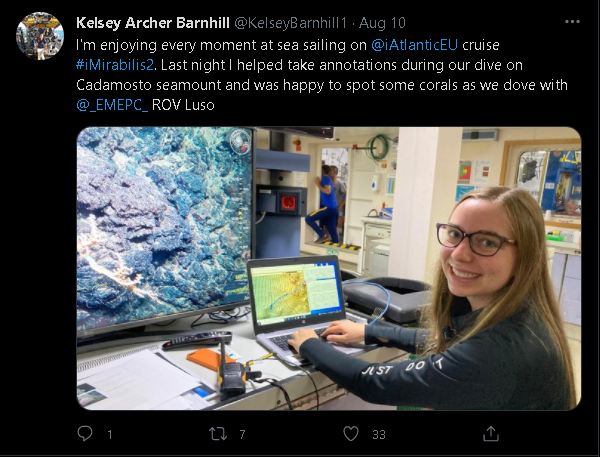
“Scientists are observing changes in the Earth’s climate in every region and across the whole climate system. Many of the changes observed, such as continued sea-level rise—are irreversible over hundreds to thousands of years.”
This is the damning conclusion of the Intergovernmental Panel on Climate Change (IPCC) in its most recent report. IPCC is the UN body for assessing the science related to climate change.
The words ‘new normal’ come to mind when reading this report and the backdrop of a global pandemic. The predictions are apocalyptic.
But why hasn’t humankind woken up to the prior warnings and can we negate the warming of the earth with words?
Coming up in Episode 30 of the Public Sector Marketing Show, I discuss:
- > Closing down the climate communications catastrophe
- > What climate change is teaching us about communications
- > Why science professionals need to step up their digital communications
- > I share three public sector organisations that are doing science comms really well
So stay tuned, and let’s find out what climate change can teach us about communications.
Joanne’s Column: The Climate Communications Catastrophe
The IPCC report was conducted by a Working Group comprising 234 authors from 66 countries.
While the science provides evidence that we are in trouble if we do not take radical climate action, there is a more upbeat note suggesting that if we make strong and sustained reductions in emissions of carbon dioxide (CO2) and other greenhouse gases we would limit climate change. While benefits for air quality would come quickly, it could take 20-30 years to see global temperatures stabilize.
The report got wall-to-wall coverage offline and online and rightly so. But it got me thinking about the role of communications in climate action. In the absence of a silver bullet to right the wrongs of generations of human kind, it is not time to leverage digital communications as the antidote to inaction?
The world is smaller in the S3 Age – we search for information, we are on social media for conversation and the smartphone gives us access all possible digital channels as well as allowing us to become a published and not merely a consumer.
So how do we close down the climate communications catastrophe? In my view we can do it in five ways.
- Make digital communications a priority strategic function in all science-led government, non-profit and diplomatic agencies
- Teach the scientists to communicate their own science online
- Create conversations and speak to the reality of citizens
- Listen and learn – what can science learn from citizens' apathy, fears, and misperceptions?
- Be willing to create content formats that are relevant to diverse audiences
Consulting: Why Science Pros Need to Step Up Their Digital Communications
Did you know that the founder of the Internet Tim Berners-Lee, a British scientist, invented the World Wide Web (WWW) in 1989 while working at European Council for Nuclear Research
(CERN). The web was originally conceived and developed to meet the demand for automated information-sharing between scientists in universities and institutes around the world.
So from the very beginning of the Digital Age, scientists were leading the charge. They know the value of information and data sharing in order to turn scientific research into action. So 32 years later we need scientists to once again take on the Internet, this time with climate change dominating feeds, live streams, and videos.
I work with some great science organisations that have mastered science communications. One of those that stand out is the All-Atlantic Ocean Youth Ambassadors project which was born in 2018. The project brings together 20 young scientists from across the north and south Atlantic to drive conversations and influence their peers, politicians, and policymakers.
Here’s a great example of science communications winning the Internet.
Kelsey Barnhill, a Ph.D. Researcher with Changing Oceans in Edinburgh is an All-Atlantic Ocean Youth Ambassador. As a young scientist, she is leveraging digital channels to educate, inform and entice interest in her work in ocean research and conversation. In a recent Tweet, she brings us inside an underwater robot dive in the Cape Verde islands.
You see Kelsey and many of her science peers understand that without all of us caring for our oceans, then her work and that of her colleagues will have less impact.

Climate change is forcing science professionals to step out online to convince and convert.
Communicating Science & Climate Action Case Studies
In today’s show, I share three examples of agencies that are using innovative ways to communicate science and climate action online.
- > Marine Institute with their Oceans of Learning Podcast
- > Teagasc with the multi-media formats on their website
- > World Economic Forum with the Facebook Page videos
Resources
GET OUR EBOOK
Digital Marketing in the Public Sector - Out with the old, in with the new, how to further your career.

WIN our Weekly Show Prize
Subscribe to our YouTube Channel or Podcast, leave a comment on any social network about the episode, use the hashtag #PublicSectorMarketingShow
Also, get a 50% discount on a course of your choice with us!
Thank You for Listening!
Thank you for tuning into episode #28 to find out the number one digital strategy for the next 10 years. If you are a regular listener, please rate and review our show.
Don’t forget to get in touch with your questions. I love hearing from my listeners, don’t be a social media stranger. Tweet me at @JSTweetsDigital
If you would like to be a guest on the show, please get in touch. Email Joanne at info@publicsectormarketingpros.com.
If you haven't already, please subscribe to The Public Sector Marketing Show or your preferred podcast platform.

 JOIN OUR FACEBOOK GROUP
JOIN OUR FACEBOOK GROUP
Leave a Reply